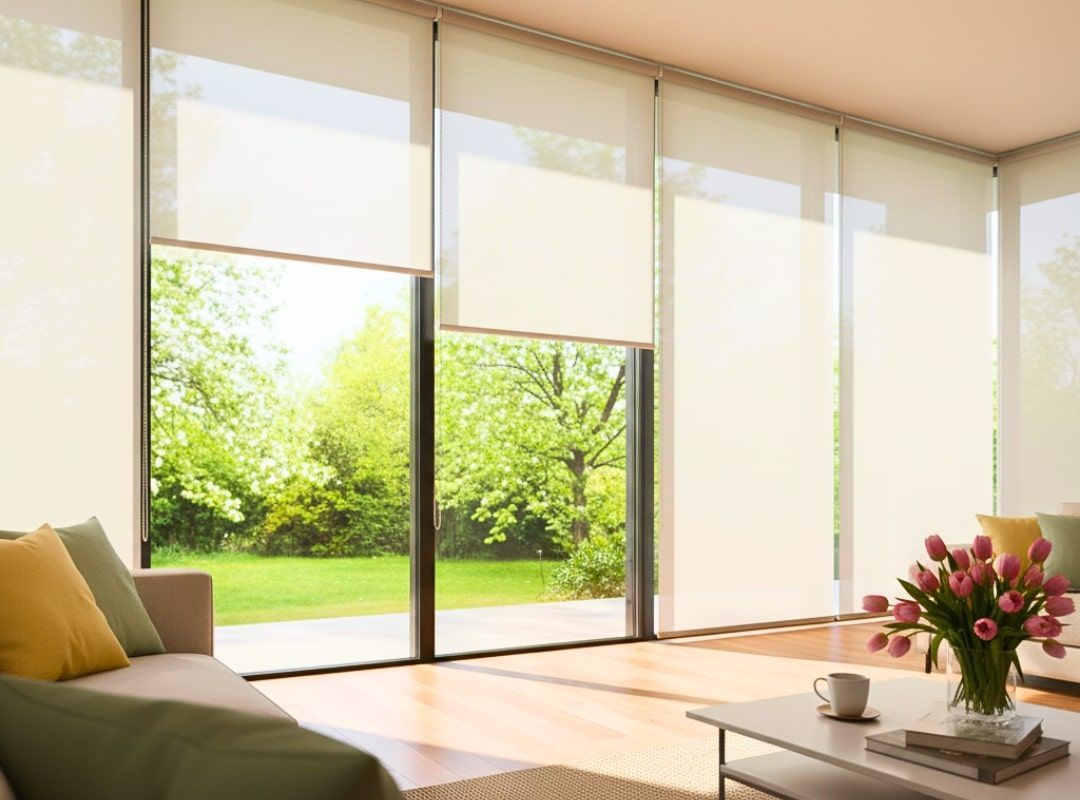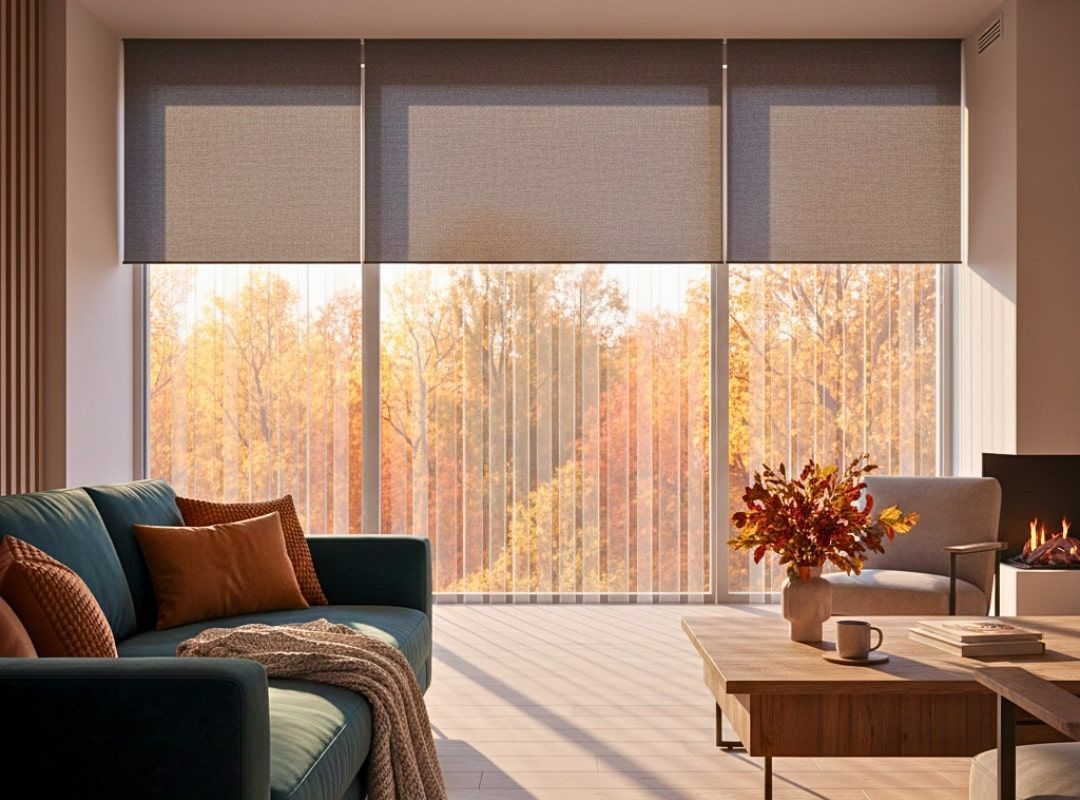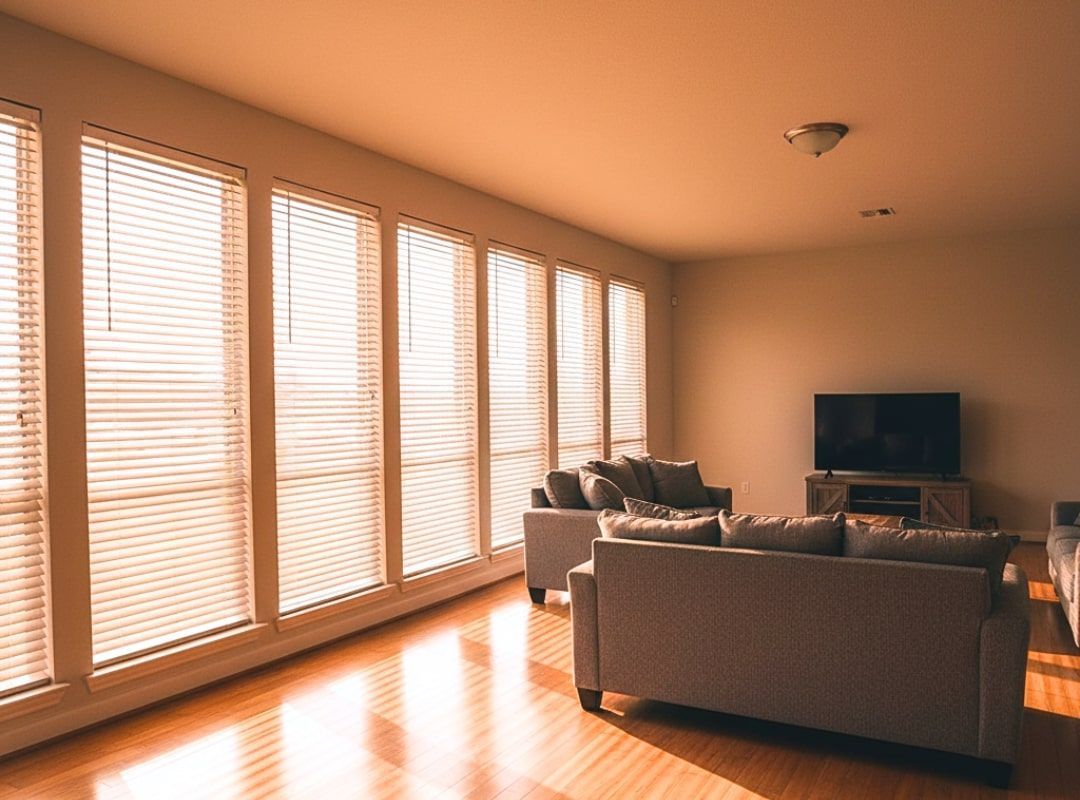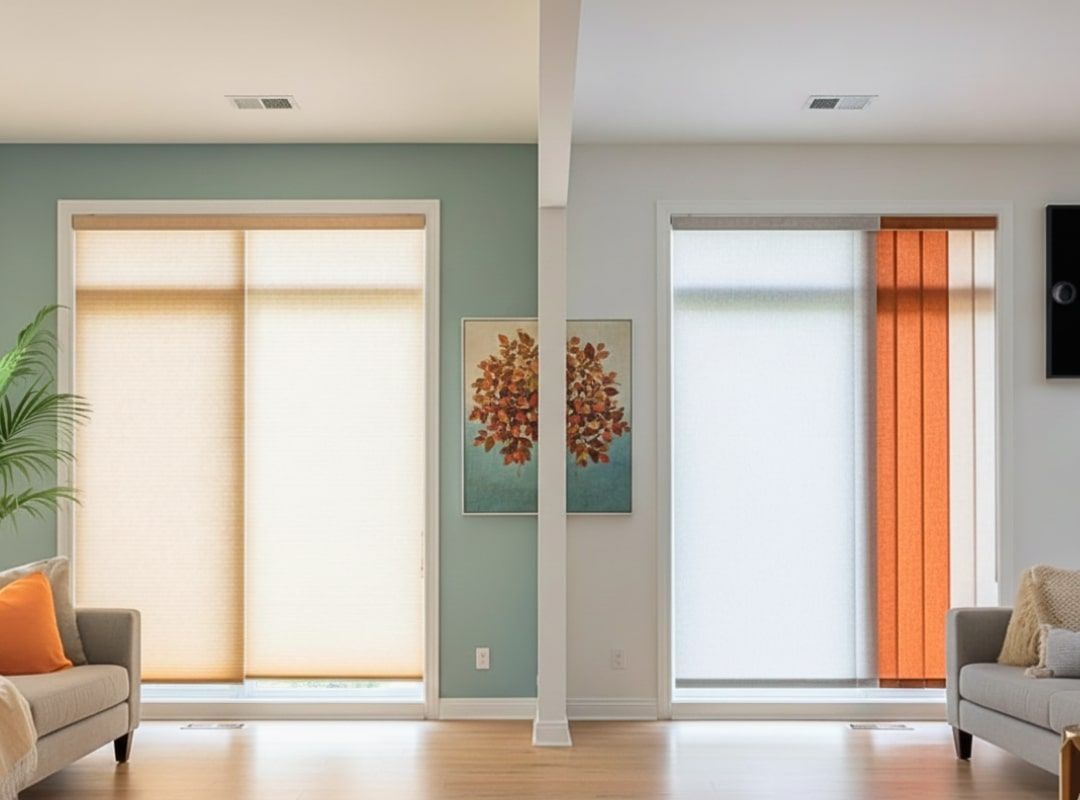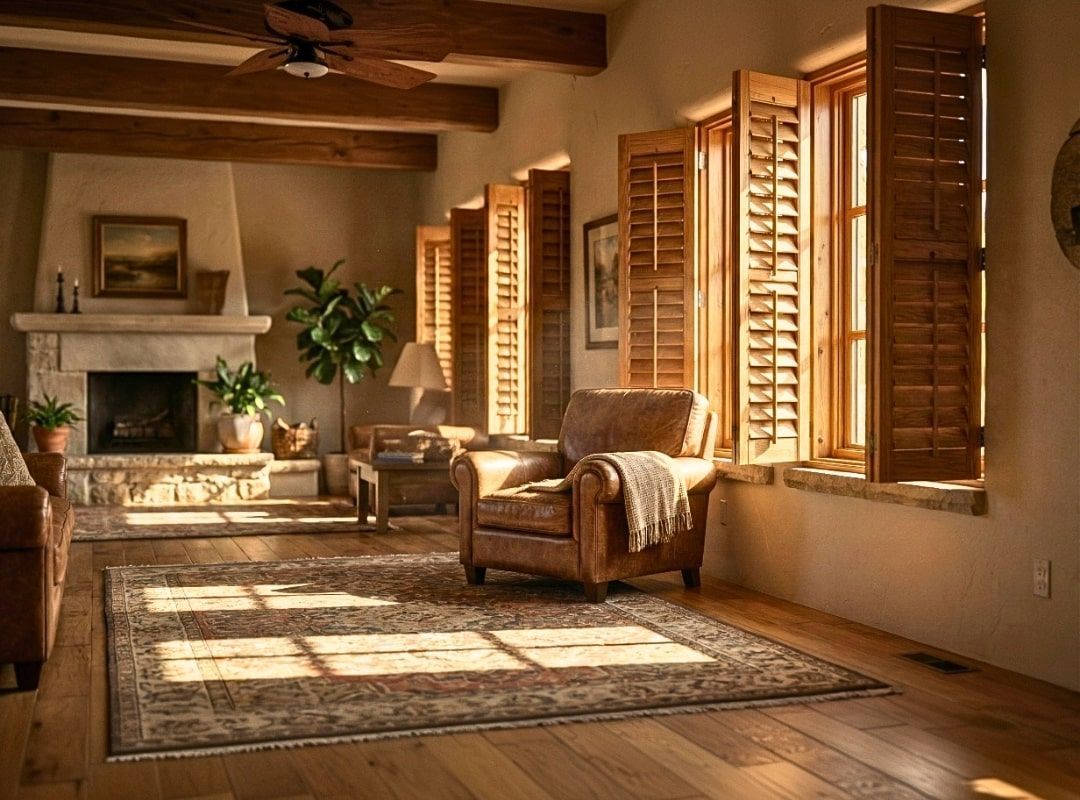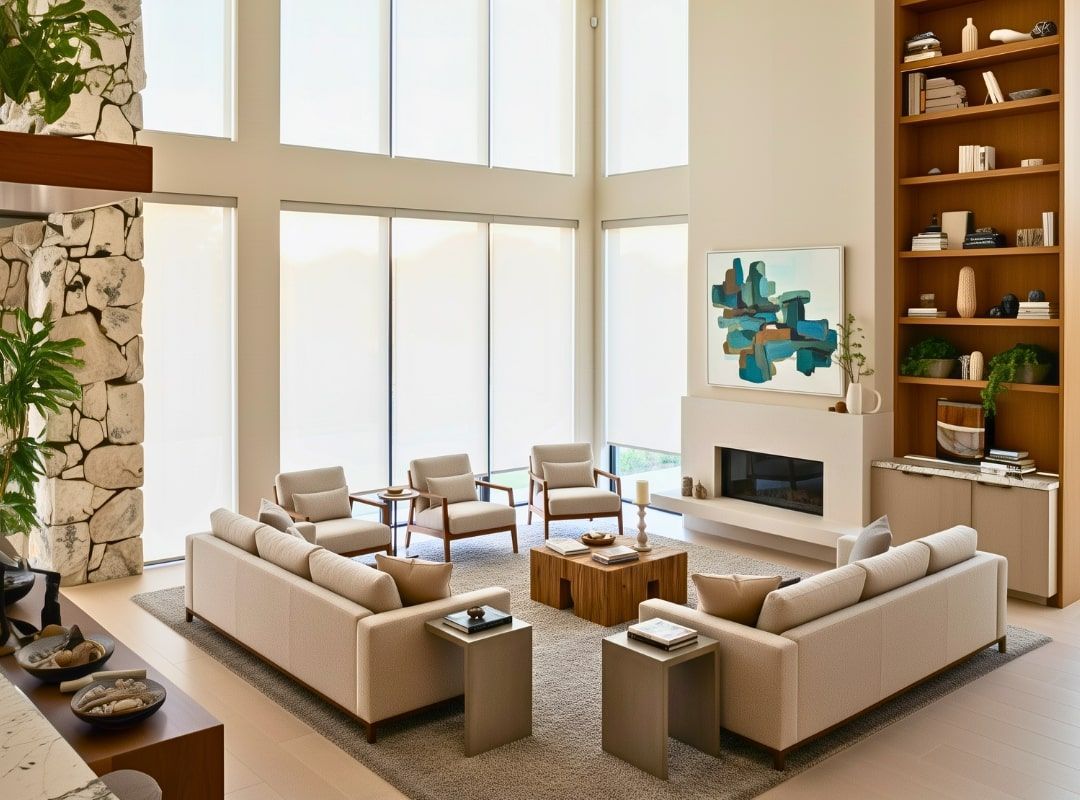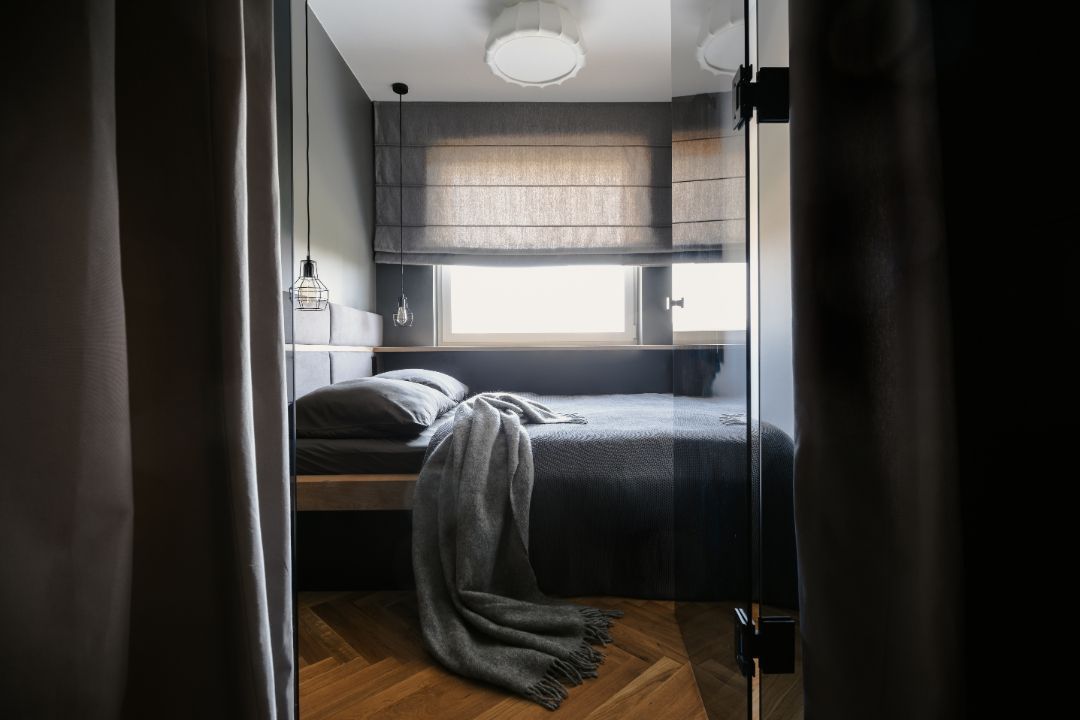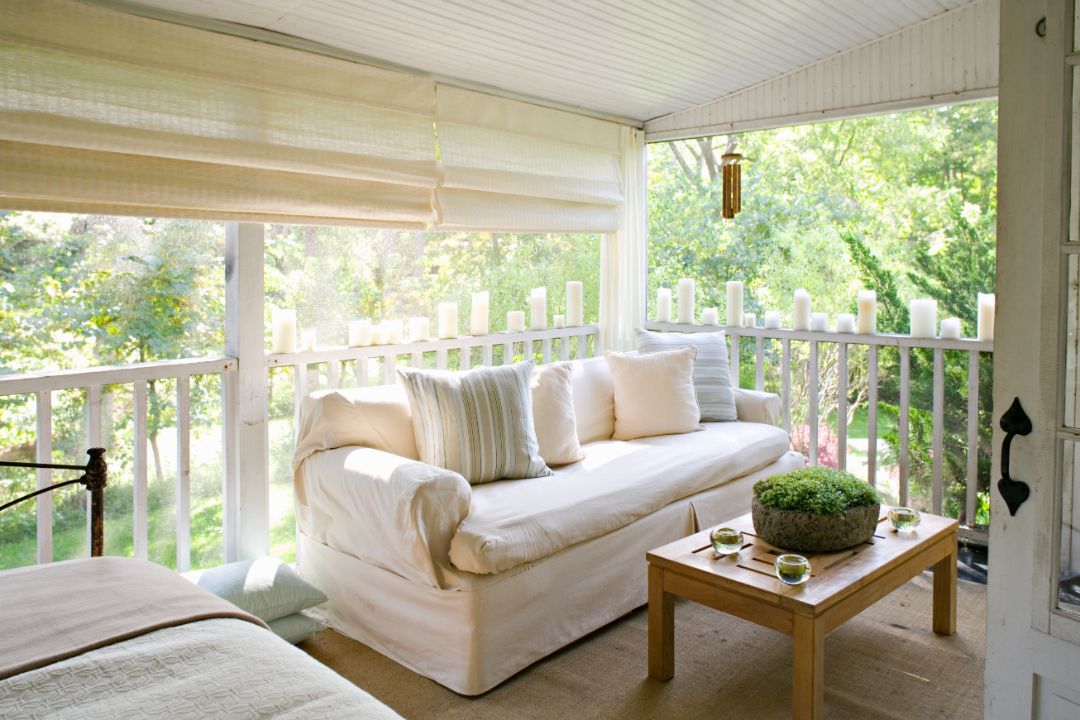Why PVC Blinds Are the Best Option for Outdoor Patios and Windows
TLDR;
PVC
blinds are the best option for outdoor patios and windows because they are durable, waterproof, and resistant to UV rays, wind, and humidity. They provide shade, privacy, and temperature control while staying low maintenance and affordable. With multiple styles and custom options, PVC blinds fit both residential and commercial outdoor spaces effectively.
What Are PVC Blinds
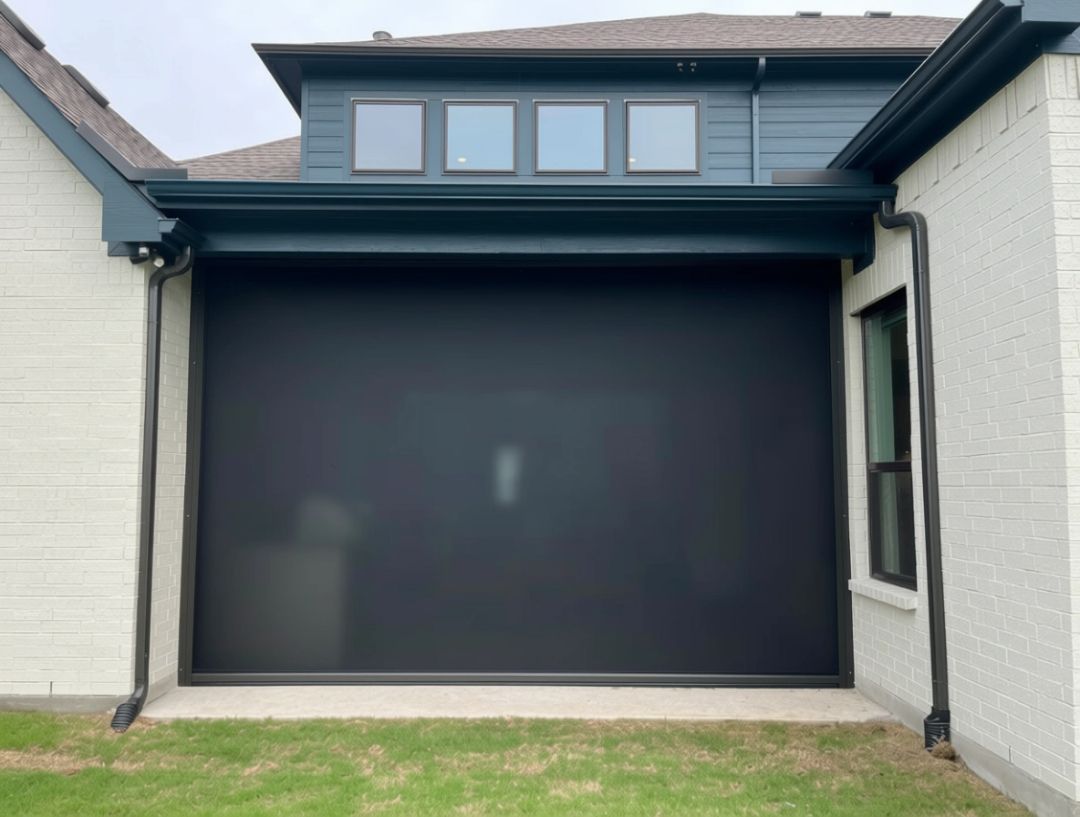
PVC blinds are outdoor window treatments made from polyvinyl chloride. This material is tough, waterproof, and resistant to mold and fading. These qualities make them suitable for outdoor patios, decks, porches, and exterior windows.
Common styles include:
- PVC roll-up blinds
- Clear or tinted PVC panels
- Vertical or horizontal PVC slats
- Motorized or manual operating systems
PVC blinds are chosen by homeowners and businesses in Texas and across humid or coastal climates because they hold up well against harsh weather and sun exposure.
PVC Patio Blinds and Weather Resistance
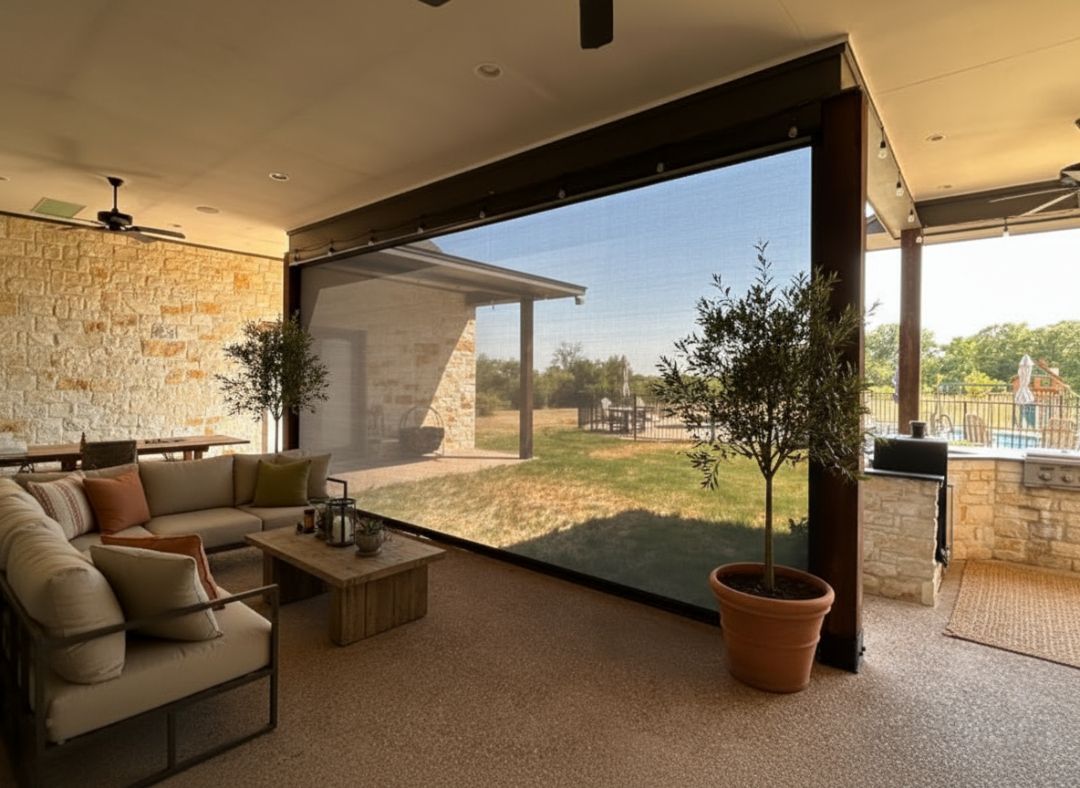
PVC blinds are built to withstand conditions that destroy fabric, wood, or mesh blinds.
- UV rays: They block harmful sunlight that fades furniture and overheats patios.
- Rain and moisture: They resist swelling, rotting, and mold growth.
- Wind: Thick PVC blinds are strong enough to stay in place during gusty conditions.
- Heat: They perform well in regions with constant high temperatures.
For homes in Texas, where summer heat and humidity are common, PVC blinds remain stable and reliable while other materials fail over time.
Energy Savings and Thermal Insulation
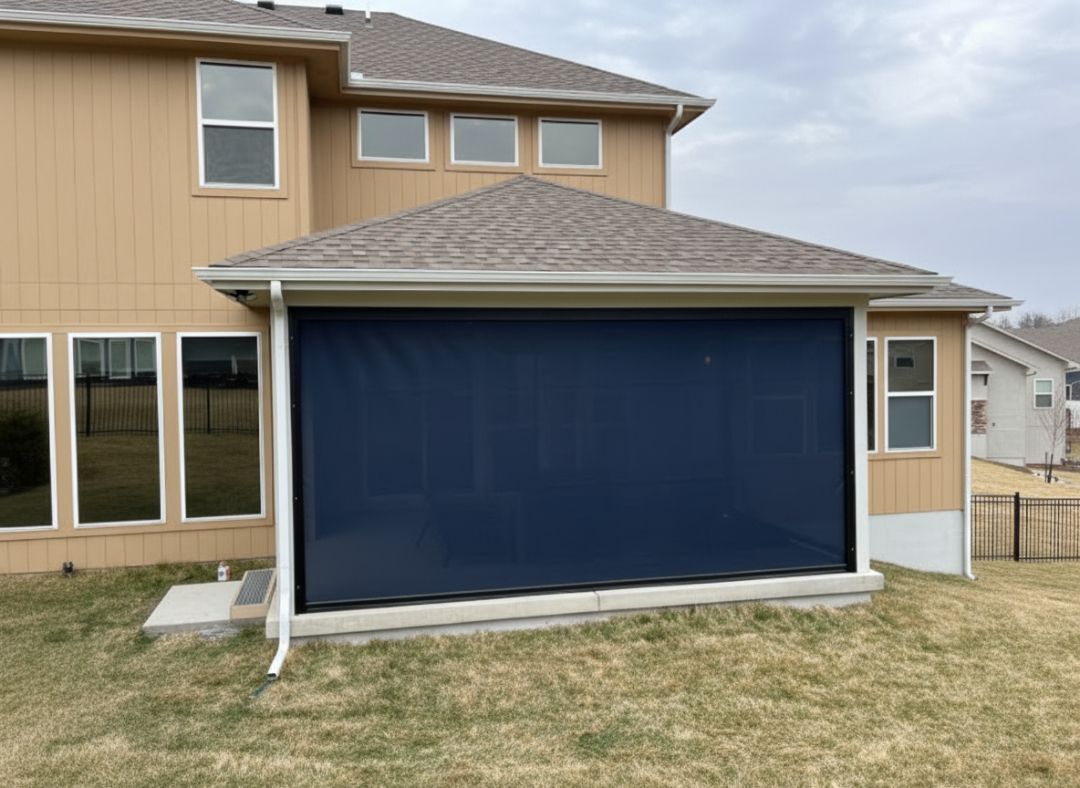
PVC blinds act as a thermal barrier for outdoor patios and windows.
- During summer they block direct heat, lowering indoor cooling costs.
- In cooler months they trap warmth in enclosed patios.
- Some homeowners report noticeable energy savings when PVC blinds cover west-facing patios or windows.
The insulating properties of PVC blinds add long-term value beyond sun protection.
Privacy and Light Control with Exterior PVC Blinds
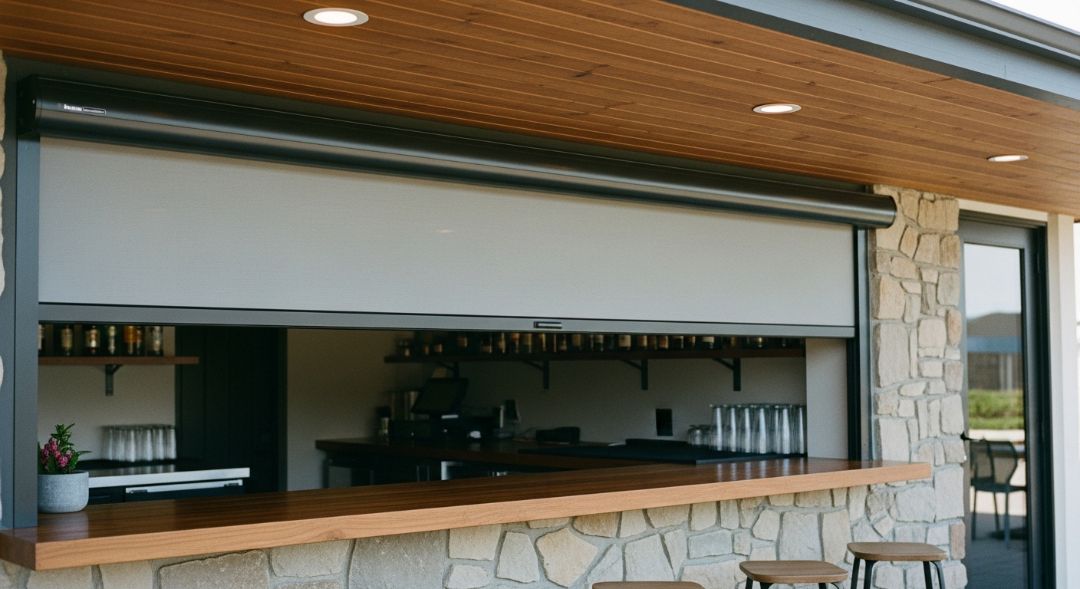
Outdoor areas often require a balance of openness and privacy. PVC blinds provide that balance.
- Clear PVC allows visibility while still protecting from wind and rain.
- Tinted PVC reduces glare and bright sunlight while offering semi-privacy.
- Opaque PVC delivers full privacy when needed.
This flexibility lets you control light levels, maintain comfort, and create a more usable space any time of the day.
Low Maintenance Blinds for Outdoor Windows

PVC blinds require less upkeep than fabric or wood.
- Cleaning involves wiping with soap and water.
- They resist mildew and mold in humid environments.
- No need for staining, painting, or sealing.
Busy homeowners and businesses value PVC blinds because they do not require costly seasonal maintenance.
Cost Benefits of Waterproof PVC Window Blinds
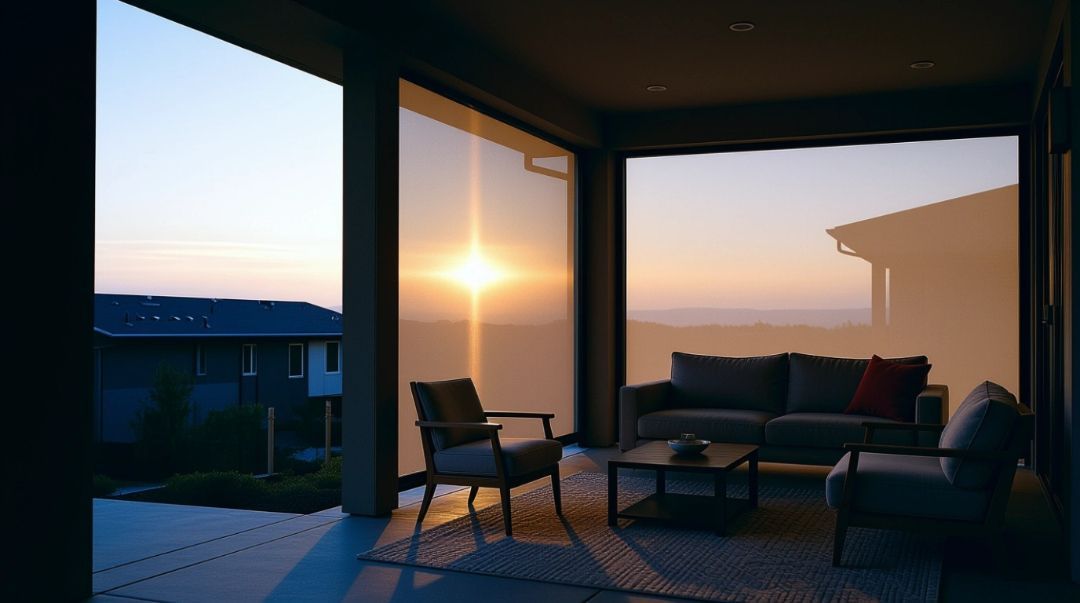
PVC blinds are cost-effective in both the short and long term.
- Lower upfront cost compared to aluminum or custom wood.
- Longer lifespan than fabric or mesh blinds.
- Reduced replacement frequency saves money over time.
When combined with energy savings, PVC blinds deliver strong return on investment.
PVC Blinds vs Mesh Blinds for Patios
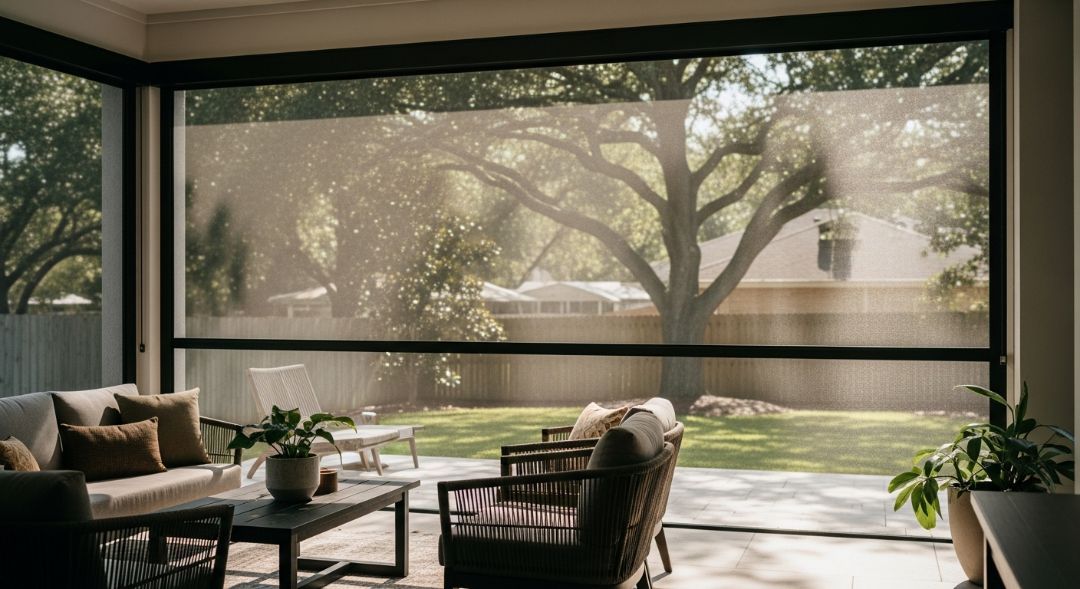
Many buyers compare PVC blinds to mesh or woven shades.
- Mesh blinds allow airflow but provide less weather protection.
- PVC blinds fully block wind, rain, and UV rays.
- Mesh tends to fade or tear sooner in high UV climates like Texas.
PVC blinds outperform mesh when complete protection and durability are priorities.
PVC Blinds vs Fabric Outdoor Curtains
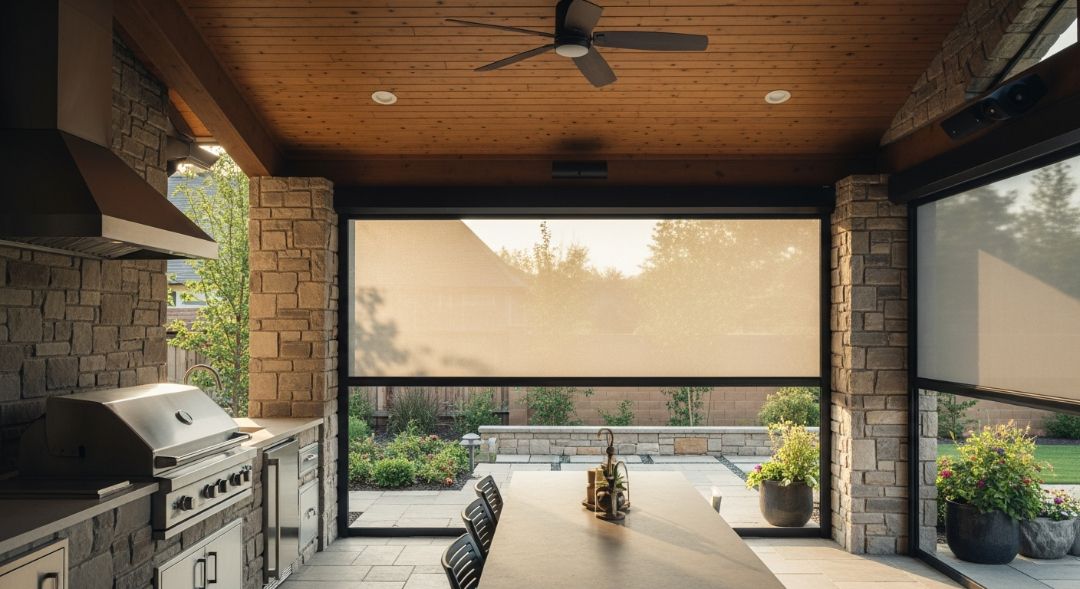
Fabric curtains are stylish but often impractical outdoors. While fabric blinds work beautifully indoors, fabric absorbs moisture outdoors, leading to mold and mildew.
- Fabric absorbs moisture, leading to mold and mildew.
- Colors fade quickly under UV rays.
- Wind can tear fabric or make it flap loudly.
PVC blinds eliminate these issues while still offering customizable styles and finishes.
PVC Blinds Compared to Wood and Aluminum
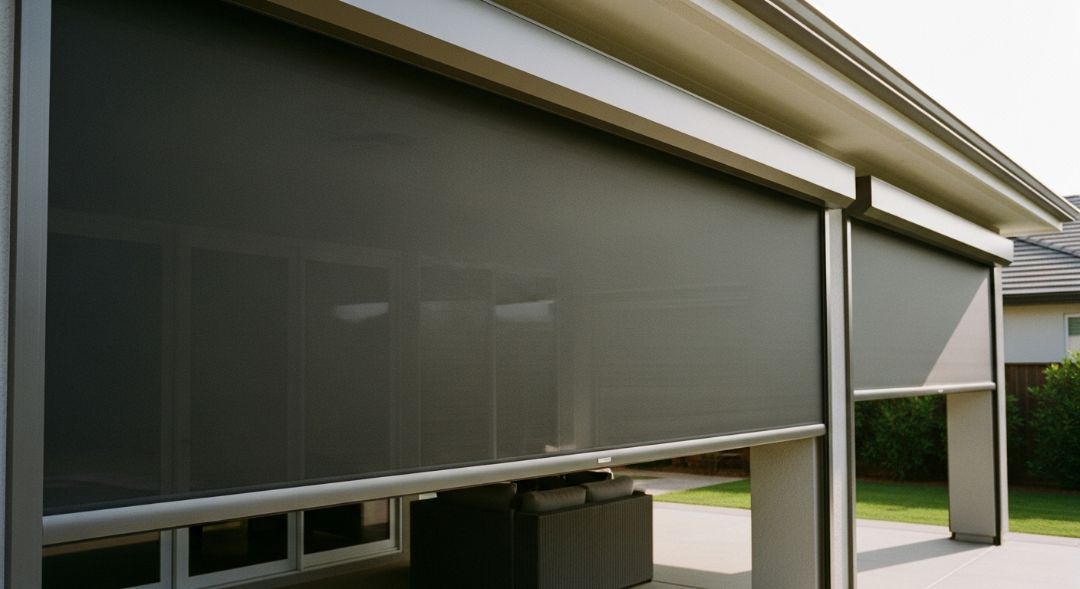
Wood blinds warp, crack, or rot outdoors. Aluminum blinds heat up quickly under sun and dent easily. PVC offers a middle ground: durable, resistant to weather, and less expensive, while alternatives like vinyl and TPC blinds are worth considering for indoor use or spaces where lighter materials are preferred.
PVC blinds also provide more insulation than aluminum, while requiring far less care than wood.
Challenges of Outdoor PVC Blinds and How to Handle Them
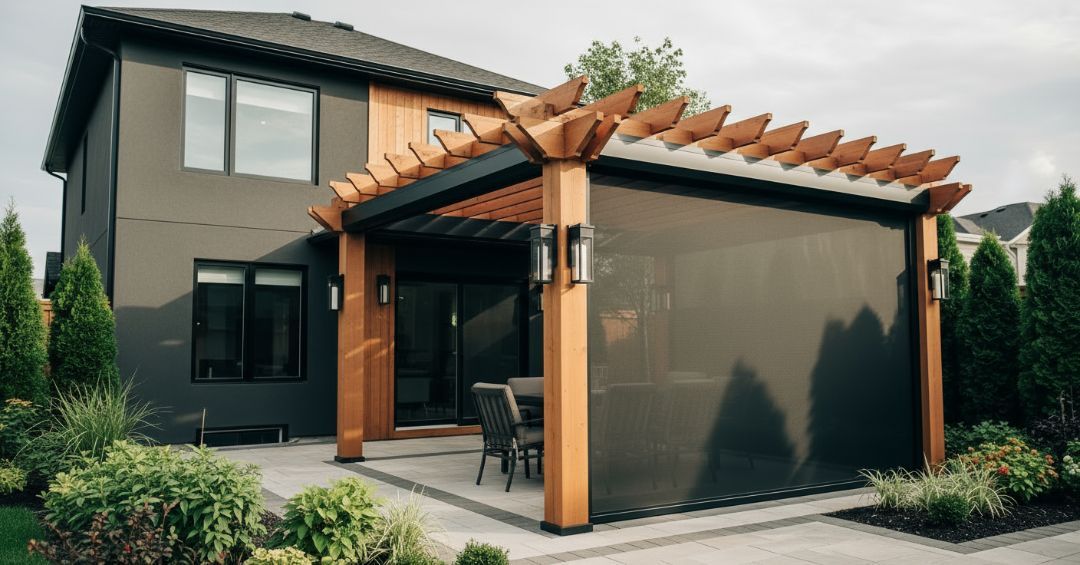
While PVC blinds have clear advantages, some challenges exist.
- Possible color fading with prolonged UV exposure. Choose UV-stabilized PVC to reduce fading.
- PVC blinds can be heavy at large sizes. Ensure proper mounting support.
- Limited airflow compared to mesh blinds. Consider roll-up styles to open space when needed.
- Environmental concerns with PVC production. Choose higher-grade or recyclable PVC when available.
With proper product selection and installation, these concerns can be managed effectively.
Installing PVC Roll Up Blinds on Patios
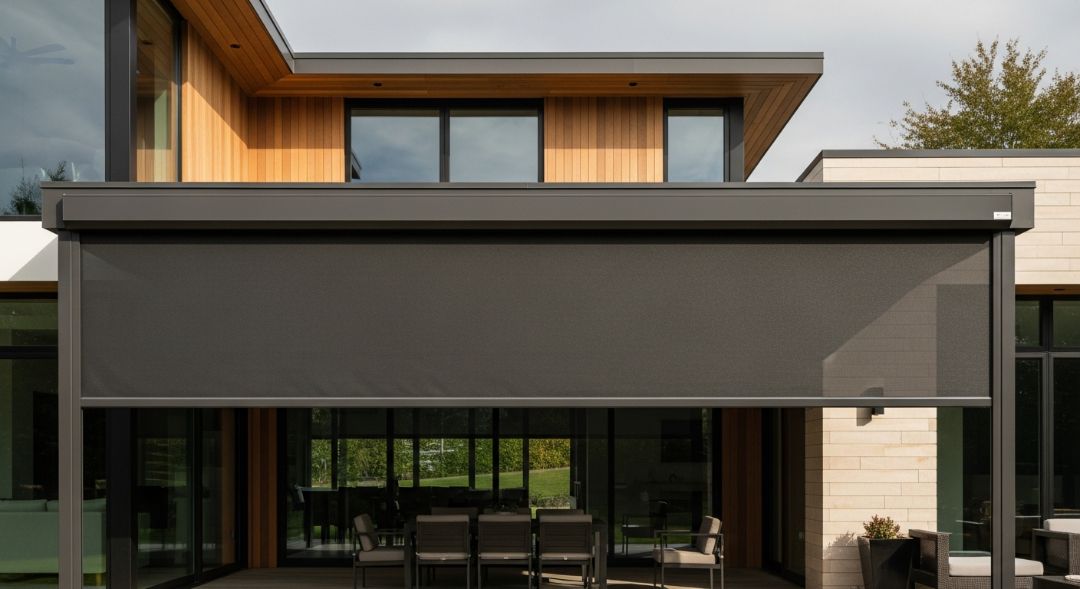
Choosing and installing PVC blinds requires planning.
Steps include:
- Measure patio or window openings accurately.
- Decide on mounting method, ceiling, wall, or frame mount.
- Choose thickness and opacity depending on climate.
- Select operation method: crank, pulley, or motorized.
- Match finishes and colors with existing décor.
- Work with a professional installer like
Love Is Blinds TX for large blinds or motorized systems.
This ensures the blinds perform well in both normal weather and storms.
Maintenance Tips for Long Term Performance
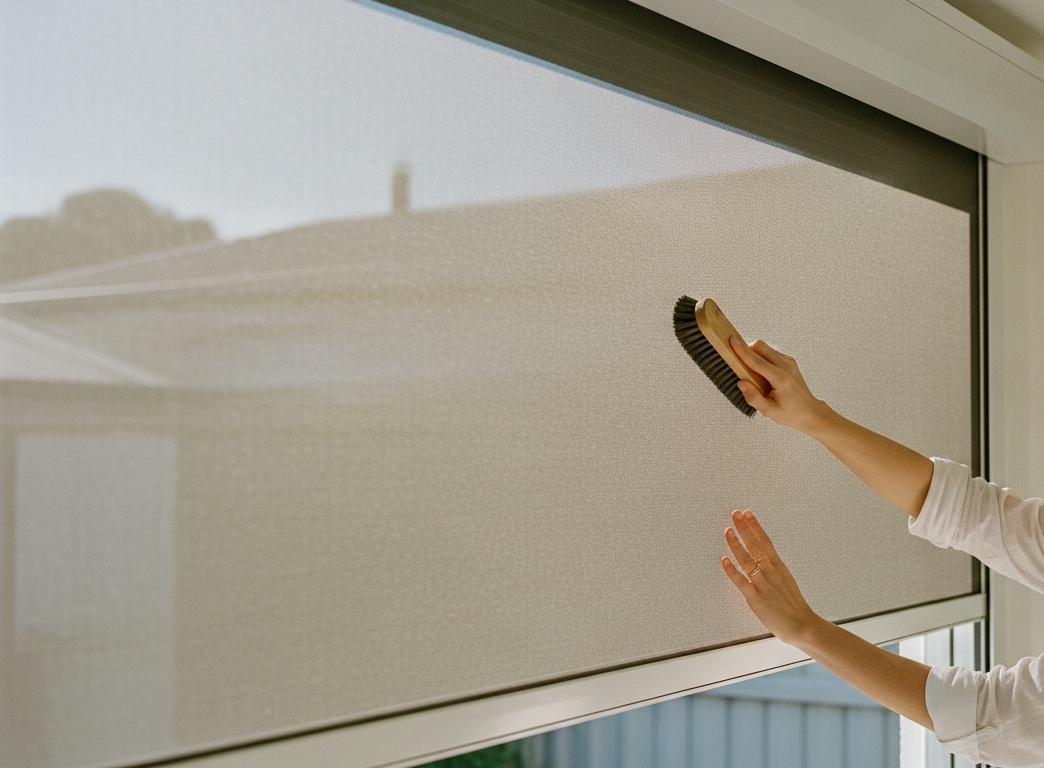
Proper care extends the lifespan of PVC blinds.
- Wash with mild soap and soft cloth every few months.
- Avoid abrasive cleaners that scratch surfaces.
- Roll up blinds during severe storms if possible.
- Check mounting brackets annually for wear.
With these steps, PVC blinds last for many years with minimal repair needs.
Sustainability and Environmental Concerns
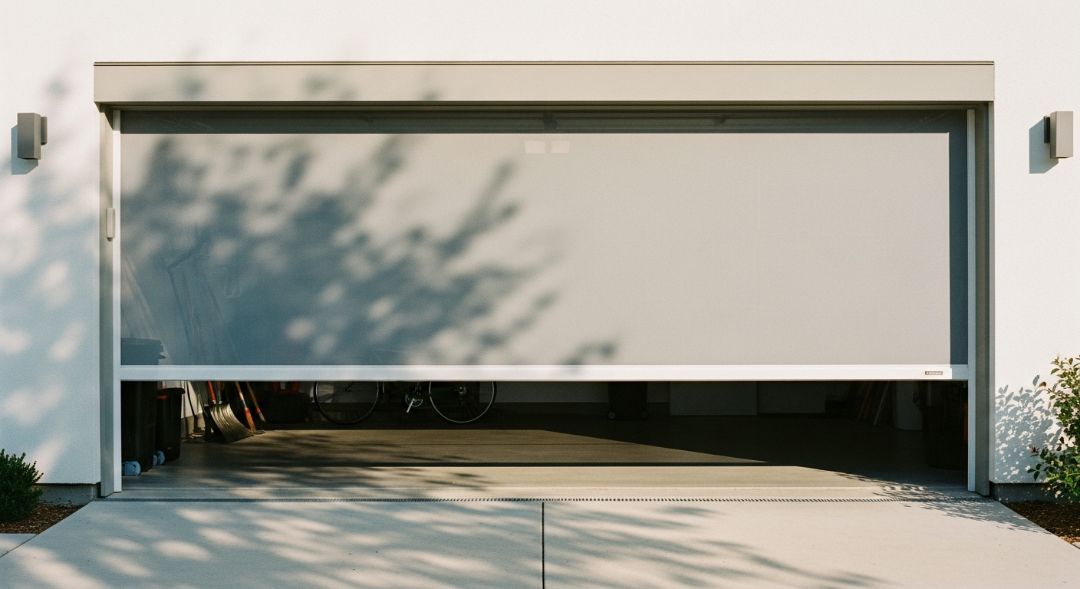
PVC is not always considered environmentally friendly. Production involves chemicals, and recycling options are limited.
Solutions include:
- Choosing blinds made with UV-stable additives that extend life span.
- Supporting brands offering recyclable PVC or take-back programs.
- Using PVC blinds as a long-term solution to reduce frequent replacement waste.
Balancing durability with sustainability helps homeowners make responsible decisions.
FAQs about PVC Blinds for Outdoor Use
Are PVC blinds safe in strong storms?
High-quality PVC blinds withstand wind loads when properly installed, though rolling them up during extreme storms is best.
Do PVC blinds turn yellow?
Cheaper PVC blinds may yellow. UV-stabilized and higher-grade PVC resists discoloration.
How long do PVC blinds last?
With care, PVC blinds last 7 to 10 years or longer depending on exposure and quality.
Do PVC blinds help lower energy bills?
Yes, by blocking heat in summer and trapping warmth in cooler months, they reduce energy use.
What is the price range?
Costs vary based on size, opacity, and motorization. PVC blinds are more affordable than wood or aluminum options.
Outdoor Window Treatments That Last
PVC blinds are a proven solution for protecting outdoor patios and windows from sun, rain, wind, and humidity. They provide comfort, privacy, and cost savings with minimal maintenance. Homeowners and businesses in Texas trust PVC blinds from Love Is Blinds TX because they deliver durability and value in challenging climates.

